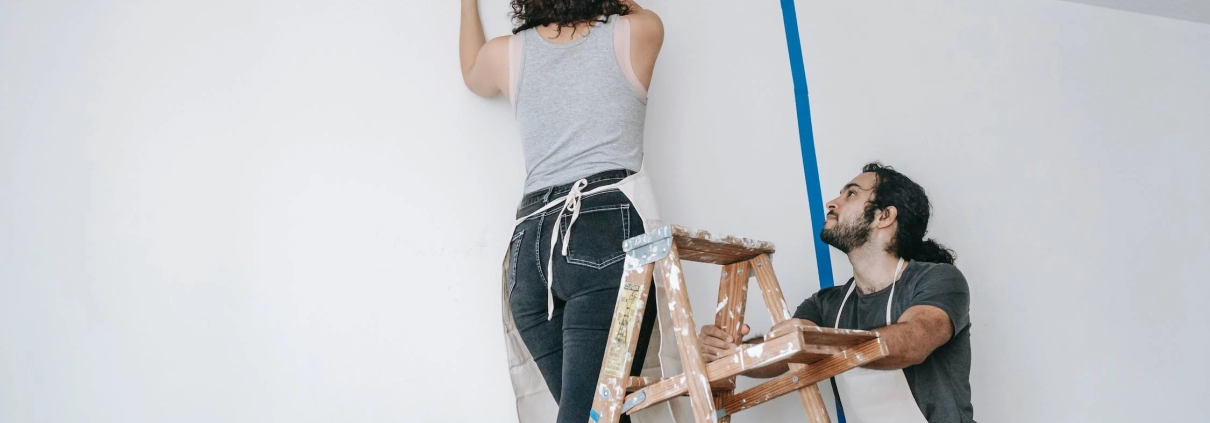How to Properly Paint a Room: Tips from a Handyman
Painting a room can seem like a simple task, but there are various steps to consider to ensure a professional-looking finish. Whether you’re giving your bedroom a fresh coat or revamping your lounge, follow these handy tips from your local Brisbane handyman to get the job done right.
Preparation is Key
Empty the Room
Before you start, make sure to clear the room of furniture or cover it with drop cloths. This protects your belongings from paint splatters and makes it easier to move around.
Clean the Walls
The next step is to clean the walls with a mild detergent to remove any dirt, grime or oils. This ensures better paint adhesion.
Patch and Sand
Inspect the walls for holes, cracks, or other imperfections. Use a putty knife to fill them with spackle, then sand it down until smooth.
Tape Off Edges
Apply painter’s tape along the edges of the room — this includes mouldings, door frames, and window sills. Make sure the tape is well-pressed to avoid any bleed-through.
Prime the Walls
If you’re covering a darker colour or painting a new surface, a coat of primer is essential. This will provide a consistent base for your topcoat.
Choose the Right Tools and Paint
Brushes and Rollers
Opt for high-quality brushes and rollers for a smoother finish. A good rule of thumb is to use brushes for corners and rollers for large surfaces.
Paint
When selecting paint, make sure it’s the right type for your surface (e.g., latex-based for walls, oil-based for trim). Also, choose a finish that fits the room’s function — flat for ceilings, semi-gloss for kitchens, etc.
The Painting Process
Mix the Paint
For uniform colour, pour all your paint cans into a large container and mix thoroughly. This process is known as ‘boxing’ the paint.
Apply the First Coat
Using a roller, apply paint in a ‘W’ pattern, then fill it in without lifting the roller. This technique reduces streaks.
Brushwork
Use a brush to cut in around the edges of the room. Make sure to feather out the edges to avoid visible brush strokes.
Second Coat
Allow the first coat to completely dry before applying a second coat. Follow the same technique as before.
Remove the Tape
Before the paint dries completely, carefully remove the painter’s tape at a 45-degree angle to avoid tearing the paint.
Finishing Touches
Once the second coat is dry, you can remove all drop cloths and move your furniture back into the room. Touch up any minor imperfections with a small brush.
Final Thoughts
Painting a room is more than just slapping on a coat of paint. It requires careful preparation, the right tools, and a systematic approach. Follow these tips from your trusted local Brisbane handyman to ensure a job well done. Happy painting!




Leave a Reply
Want to join the discussion?Feel free to contribute!